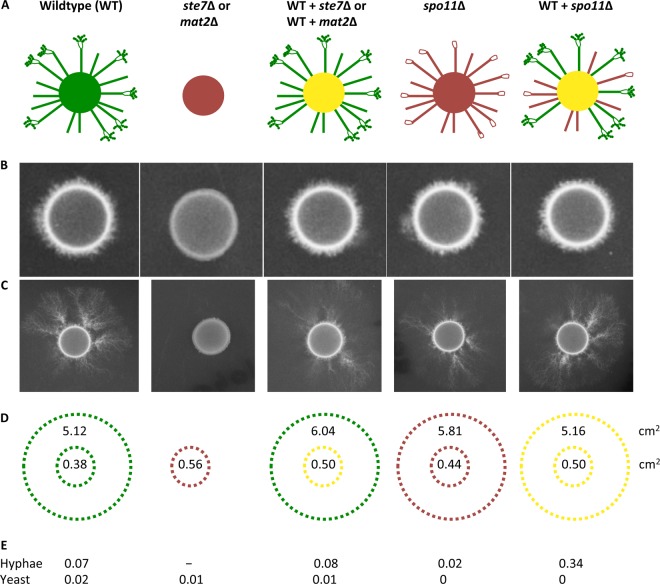Fig 1.
Unisexual reproduction confers a dispersal advantage. (A to C) Genotypes of the strains used in this study are shown (A), along with their phenotypes for growth on the mating-inducing media MS and V8 agar for 1 week (B) and 3 weeks (C). Green represents the WT, red represents deletion mutants, and yellow represents a mixture of the two. The wild type is capable of unisexual reproduction and differentiates into hyphae, unlike the mat2Δ or ste7Δ mutants, which are incapable of unisexual reproduction. The spo11Δ mutant forms hyphae but produces few viable spores that could be disseminated aerially or via other routes. (D) The surface areas (cm2) covered by yeast cells in the center and the extra surface areas covered by hyphae represent the averages of three replicates. (E) Standard deviations are provided for the respective yeast and hyphal areas. mat2Δ and ste7Δ are represented by one measurement, as they show comparable results. All strains grew to cover the same surface area on YPD (data not shown).

